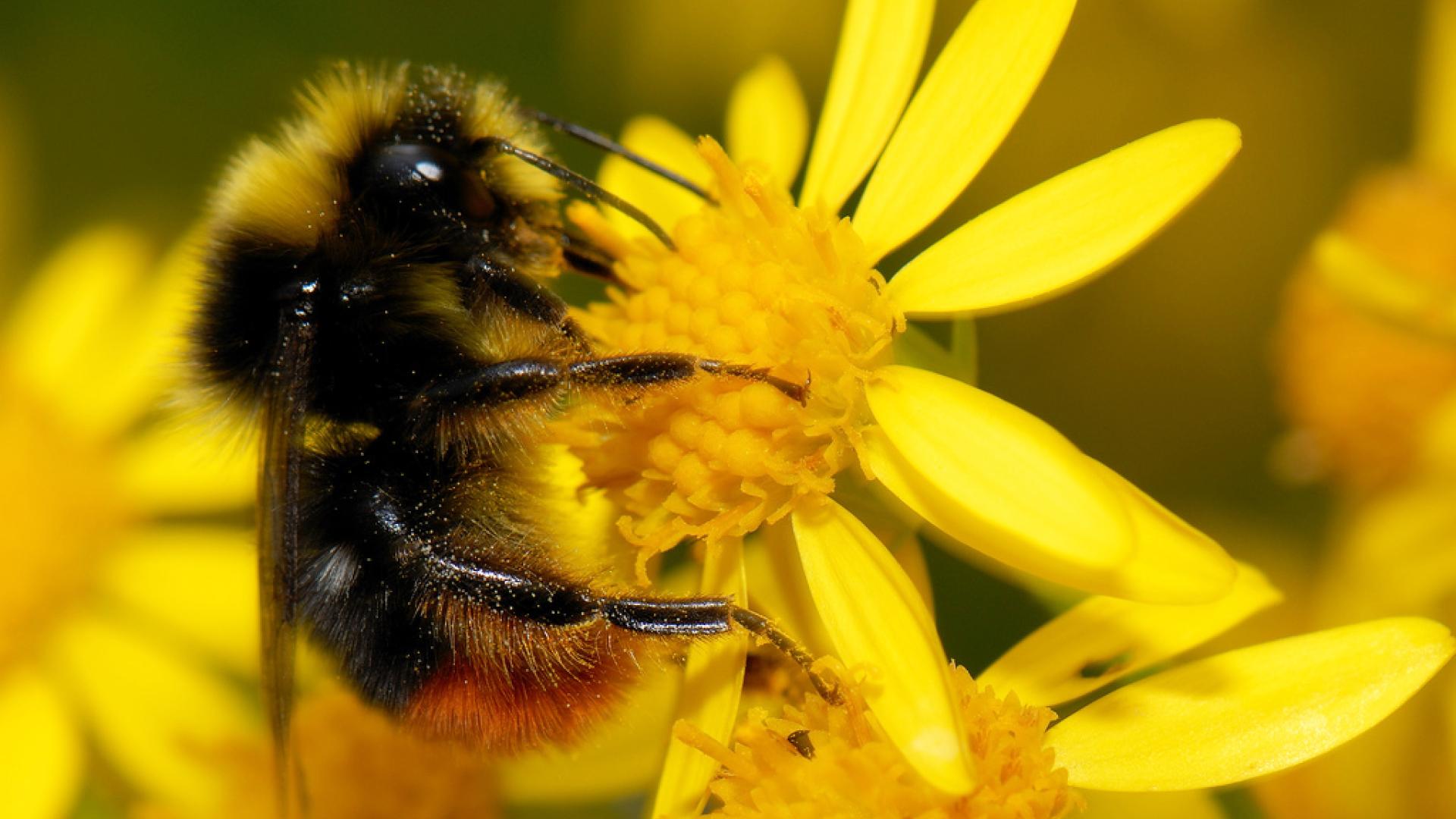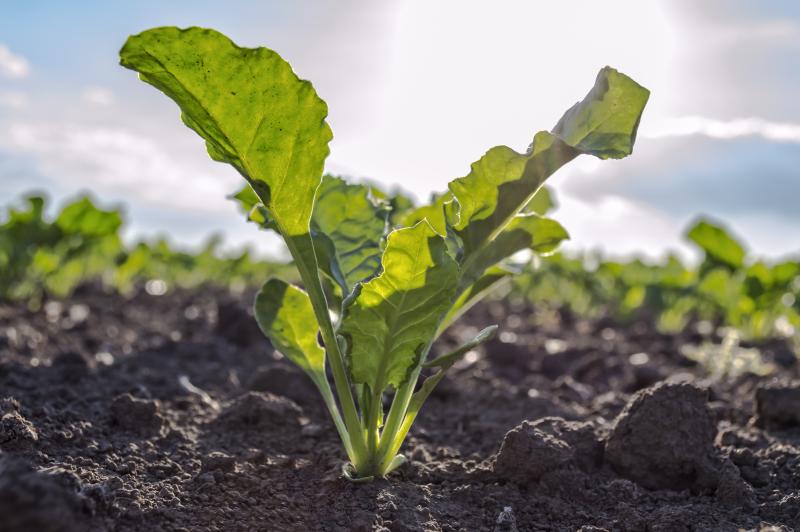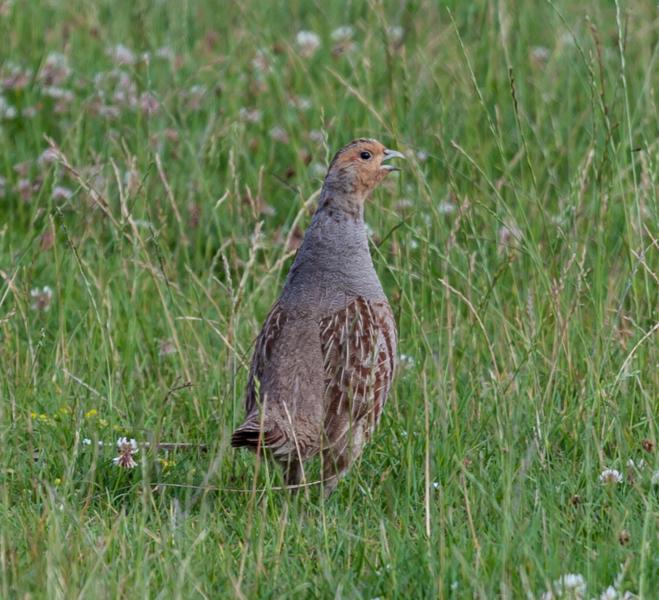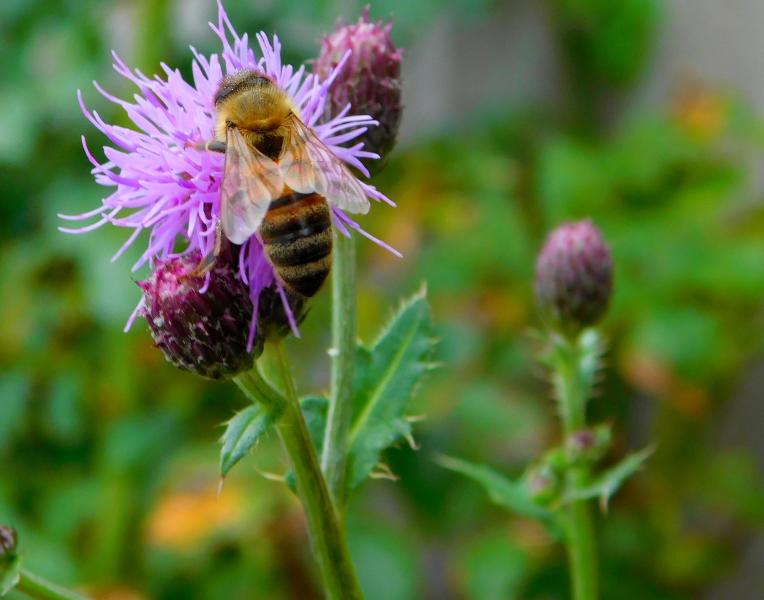Sandra Bell06 Feb 2023
This article was first published in 2021 and updated in 2022 when the government gave the go-ahead for temporary use of banned bee-harming pesticides for a second year running. Now in 2023, in a bad case of déjà vu for bees and other pollinators, the government has repeated this decision – once again allowing the ‘emergency’ use of thiamethoxam on sugar beet against the recommendation of its own expert advisors.
The decision came just days after the EU Court of Justice ruled out further derogations in EU countries for neonicotinoids like thiamethoxam which have been expressly banned from use. Meanwhile the UK government continues to drag its feet over developing a strategy to reduce reliance on pesticides and help farmers with safer alternatives. The government is failing on its own green promises to restore nature and maintain strong protections outside of the EU.
Our response to this latest decision is included in this BBC coverage and press release from The Pesticides Collaboration.
Why neonicotinoid pesticides are banned
Neonicotinoid pesticides (also known as neonics) are banned in the European Union and the UK for use on all outdoor crops because of the high risk to bees and other pollinators. This ban was based on a thorough scientific assessment of the evidence and was backed by the UK government.
But in January 2022, as in 2021, the government gave temporary approval for farmers to use the neonic, thiamethoxam on sugar beet. This not only flies in the face of the recommendation of its own expert advisors but also undermines its promises to protect pollinators and to follow the precautionary principle in environmental decision-making.
Not following the science
Official papers show that the Health and Safety Executive (HSE) advised the government that the emergency authorisation “cannot be supported” because the potential adverse effects on pollinators outweigh any benefits. The HSE raised several concerns about the proposal for temporary use, including the impact on bees visiting flowering crops planted after the treated sugar beet.
Similarly in 2021 the HSE concluded that the application "does not demonstrate a safe use in the scientific risk assessment" and "On that basis the HSE recommendation is to refuse the use".
In 2022 another expert body the Expert Committee on Pesticides (ECP) stated that “it is unable to support an emergency authorisation” citing the HSE’s assessment relating to potential impacts on adult honeybees, other pollinators and aquatic organisms.
Back in 2018 the UK government followed its experts' advice and refused a similar application for emergency authorisation for neonics on sugar beet due to the environmental risk.
Since then scientific evidence of harm from neonics has grown - as the Chief Scientific Advisor and the ECP pointed out in their advice to ministers. The government consistently says that it follows the science on pesticides so why won't it in this case?
Not saved by the weather this time
The 2021 and 2022 emergency authorisations are subject to a threshold for the level of crop damage predicted from virus yellows infection – which is carried by aphids – and determined by modelling carried out by Rothamsted Research. If the threshold is not met the sugar beet seeds are not treated.
In 2021 a spell of cold weather had a significant impact on the overwintering aphid populations and resulted in a very low prediction of virus yellows infection for the 2021 sugar beet crop. Hence the neonic treatment wasn't used.
Unfortunately the weather in 2022 did not grant the bees another reprieve. The threshold was triggered on 1 March meaning that the neonicotinoid seed treatment could be used.
Here I explain some of the more worrying aspects of this decision.
Banned for a good reason
Three neonicotinoid insecticides were banned in 2013 for a good reason. Independent scientific evidence showed that these chemicals harm bees and other pollinators. Applied as seed treatments, they’re taken up by the whole plant so bees get a dose of neonics when they feed on flowering crops. The ban was extended to non-flowering crops like wheat and sugar beet in 2018, following a comprehensive review of the scientific evidence. This concluded that neonics contaminate the soil, so that crops grown in the same field and wildflowers grown nearby can take up the chemical. Bees can even get a harmful dose by drinking from sap droplets on a plant. Neonics also contaminate water and consumption of treated seeds poses a risk to birds.
The government's expert advisors referred to all these risks in their advice to turn down the last two emergency authorisation applications for use on sugar beet.
The evidence against these chemicals is clear. They should have no place in our countryside – even for temporary use.
Why the government's decision is wrong
This decision is once again at odds with its promises to protect pollinators. That it comes just two months after the government’s flagship Environment Act included a commitment to reverse species decline by 2030 calls into question whether it is actually prepared to take the action needed to meet that target.
Risks to bees and other wildlife – even from temporary use
In 2018 the application for emergency authorisation for neonics was rejected on the grounds that the risks to bees and the wider environment were too great, including:
- Risk to bees from residues in soils taken up in subsequent crops and wildflowers.
- Risks to birds and mammals eating seedlings and birds eating treated seeds.
- The potential for concentrations of neonics in surface waters to reach levels that could harm populations of aquatic insects.
The same risks were identified in the 2021 and 2022 applications.
For example in December 2020 the HSE advised that “the risk from following crops has not been shown to be acceptable” and pointed to risks both in terms of pollen and nectar from flowering crops and guttation (drinking sap) from maize crops.
For both recent applications HSE also warned that surface water could fail Predicted No-Effect Concentration levels and that there was some risk to birds from eating treated seed, although this was an unlikely route of exposure.
Growing evidence of harm
In their advice on the 2021 and 2022 authorisations the Chief Scientific Advisor (CSA) and the ECP both pointed to the increasing evidence of harm from these chemicals.
In September 2021 the ECP noted that “There is new evidence regarding the risk from neonicotinoids globally which adds to the weight of evidence of adverse impact on honeybee behaviour and demonstrated negative impacts on bee colonies” and went on to advise that new studies of adverse effects of thiamethoxam should be considered.
In December 2020 the CSA said that “Environmental damage of neonicotinoid use is clear and the evidence is increasing. Keeping neonicotinoid use to an absolute minimum will continue to be critical to support population recovery of bees and other species." Advice which the CSA has pointed out remains pertinent for the 2022 decision.
Despite these warnings from its own advisors, the government decided that the risks would be managed by mitigation measures.
What about wild bees?
Evidence increasingly shows that solitary and bumblebee species are harmed by neonics but the assessment for this emergency authorisation only considers the potential impact on honey bees.
Any assessment of future applications for emergency authorisation for neonics must consider the impact on our wild bees and not just managed honey bees.
Why are the mitigation measures flawed?
The ECP, the HSE and Natural England have all raised concerns about the measures put in place to mitigate risks from using this product.
Destroying flowering weeds
The 2018 ban that was backed by the UK government and the refusal of an emergency application that year both pointed to the risk from neonics being taken up by wildflowers. In the 2021 and 2022 authorisations, Defra (the Department for Environment, Food and Rural Affairs) imposed conditions requiring the use of herbicide programmes to minimise the number of flowering weeds in treated sugar beet crops.
It seems perverse that a measure meant to protect bees involves removing flowers and using more chemicals.
In fact (in advice on the 2021 authorisation) HSE noted that “...we would not usually use weed control as mitigation to protect pollinators from flowering weeds (because the loss of food can cause more harm than the pesticide and because not all farmers successfully control weeds)" but still went on to conclude that "in the case of this emergency application it can be considered that the weed control for sugar beet will reduce the risk to pollinators from exposure via flowering weeds”.
It’s certainly an indication of just how toxic and persistent these chemicals are that the government deems such a measure necessary to allow their temporary use.
Risk from wildflower margins
Evidence shows that bees can be exposed to harmful levels of neonics via wildflowers on the edge of fields yet wildflowers in field margins are not subject to any control conditions. It would be even more perverse to wipe out wildflowers planted to help pollinators. In fact, Natural England advised against such an approach because it would decrease bee habitat and food sources. However it is concerning that this route of exposure was not covered by any mitigation measure and the CSA points out that without mitigation “flowering margins would represent a possible non-lethal risk to bee health”.
Non-lethal risks should not be dismissed as being of lesser importance. They include impacts on reproduction and navigation that are key to bees' survival. The CSA in his advice refers to known sub-lethal dose effects on bees after low level exposure to thiamethoxam “such as an inability to return to their hive”.
Avoid planting flowering crops for at least 2 years after treated sugar beet
The risk to bees from flowering crops planted in soil containing neonic residues is one of the reasons why the neonic ban was extended to non-flowering sugar beet. The 2018 emergency authorisation decision also flagged this issue for future applications to address.
It’s an indication of just how toxic these chemicals are that such a long period of time is needed before a flowering crop can be grown. The Defra statement for 2021 says that conditions applied to the authorisation to address this include “no flowering crops are planted as following crops for a period of at least 22 months, with an extended period of exclusion for oilseed rape (of 32 months), to minimise the risk to bees”. This was changed to 32 months for all flowering crops in 2022.
Even with a 32 month gap, risks to bees cannot be ruled out. The HSE stated in its most recent advice that ”due to the lack of chronic toxicity data on adult forager honey bees as well as residues in pollen and nectar, it is not possible to determine if this is an appropriate interval”.
Reducing the rate of application
Defra’s statement says that there will be a reduced application rate for the seed treatment but would this be enough to avoid harm to aquatic invertebrates? Buglife’s research has shown that neonics used at normal rates on sugar beet in 2016 caused the River Waveney to be chronically and acutely polluted with thiamethoxam and other neonics.
The HSE warned in relation to both the 2021 and 2022 authorisations that there would be impacts from surface water contamination.
Yet in the 2021 authorisation Defra stated that the risks to aquatic invertebrates were “considered to be acceptable” and its 2022 Statement of reasons for approving the use neglects to address risks to aquatic wildlife.
No specific mitigation measures have been imposed to reduce the risk of water pollution. Matt Shardlow from Buglife says “Defra could have restricted use next to SACs (Special Areas of Conservation) or rivers or in sensitive catchments, but they have done nothing specific to address harm to aquatic life”.
Where are the alternatives?
Demonstrating need and showing that there are no alternative ways to control the pest or disease are key requirements for authorisation of emergency use. The Defra statement for the 2021 and 2022 decisions stated that protection could not be provided by any other reasonable means.
But there are alternative solutions. The use of natural predators can be an effective way to control aphids.
In 2021 Defra stated that “The applicant outlined a plan for developing alternative, sustainable approaches to protect crops without the use of neonicotinoid seed treatments. This includes the development of resistant plant varieties, measures to improve seed germination and new practices for growers. The plan is already being delivered”. The HSE noted that ladybird numbers had been low in 2020 and that there are challenges in encouraging consistent natural predators.
Apparently, the plan had not made much progress by 2022 which raises the broader question of whether the industry is putting enough effort into helping growers use non-chemical methods. Farming with nature requires a more holistic approach than reaching for a spray or treated seed. Natural predators need habitat on the farm. Farmers will need the right kind of advice and support to move away from insecticides. The market is highly concentrated, with British Sugar buying all UK sugar, so it has considerable influence over how crops are grown, making its advice to farmers on alternatives crucial.
Has this happened because we’ve left the EU?
Better transparency must be the norm
If there is one positive to be taken from the 2022 decision it's that the government published the expert advice soon after making it. In 2021, Friends of the Earth and our allies asked for the expert advice as soon as the decision was made. But it was only after submitting a Freedom of Information request in January that we received the information in March, with the HSE taking twice the normal amount of time to respond. Such secrecy and delays in releasing information make it hard for stakeholders and independent scientists to scrutinise or challenge decisions before it is too late. We hope that this greater transparency will be the norm from now on.
Three years of "emergency" applications?
UK guidance on emergency authorisations states that “It would not generally be expected that there will be requests for emergency authorisations that have been previously granted to be renewed”. Yet this is the second year running that Defra has approved emergency authorisation for the same use. Disturbingly, this seems to have been anticipated in 2021 when Defra stated that “The plan anticipates that applications for emergency authorisations for neonicotinoid seed treatments may be needed for three years (2021 to 2023)”.
This is no incentive for the industry to move away from these toxic chemicals. By suggesting that it will consider granting repeated “emergency” uses, the government is sending a perverse signal.
Is there any case for using banned pesticides?
The National Farmers Union (NFU) and British Sugar claim that crop yields - in the East of England where most sugar beet is grown - would be threatened if farmers couldn’t use these pesticides.
The NFU claims that in 2020 “some farmers” experienced yield reductions of “up to 80%” due to the beet yellows virus being spread by aphids. Yet in 2021 – with no neonics and less pest pressure - there was a good sugar beet harvest.
In February 2021 modelling showed that cold weather had slowed the build-up of aphids and that the threat to the crop no longer warranted the use of thiamethoxam.
It’s worth remembering there was a similar warning of crop failure from the NFU over the ban on using neonic-treated oilseed rape seeds. Oilseed rape yields have fluctuated since the 2013 ban, but there’s no clear trend of decline. In fact, there have been bumper harvests as well as poor ones since the ban. Hill Farm, which has worked hard to adopt nature-friendly farming techniques, reducing all insecticide use, reported its best crop for 5 years in 2020.
A key aspect of a decision on an emergency authorisation of a banned product is whether the potential benefits outweigh the potential adverse impacts. The HSE was very clear in recommending that in this case – and taking into account the precautionary principle – the potential adverse effects outweigh the likely benefits.
The ECP also noted that the latest contracts between farmers and British Sugar included an insurance scheme to offset possible losses due to the virus – further questioning the need for this authorisation.
Surely insurance is a better way to protect farmers than bringing back banned products?
The wrong direction for farming
The decision to allow a harmful pesticide to be used, albeit on a temporary basis, is symptomatic of a wider failure to invest in the support farmers need to reduce reliance on chemicals and pursue nature-friendly farming practices.
It’s widely recognised that healthy functioning ecosystems are essential to food production and that future food production could be undermined by damage to biodiversity.
The government is currently rewriting its National Action Plan for the sustainable use of pesticides. The draft plan commits to setting targets to reduce the harm from pesticides, but is weak on how it will support farmers to adopt non-chemical farming practices. It’s essential that the government sets out ambitious targets that cut the use and impacts of pesticides and helps farmers get off the chemical treadmill.
What is Friends of the Earth doing?
Friends of the Earth along with other civil society organisations in the Pesticides Collaboration is campaigning for a strong National Action Plan. This should include ambitious targets to reduce the use and impacts of pesticides, a commitment not to bring banned bee-harming chemicals back into use and much better support to help farmers adopt nature-friendly methods of farming.
We’ll also be working with our allies to hold the government to account on the targets and commitments it has set out in the Environment Act from halting species decline and ensuring nature’s recovery to tackling air pollution.
